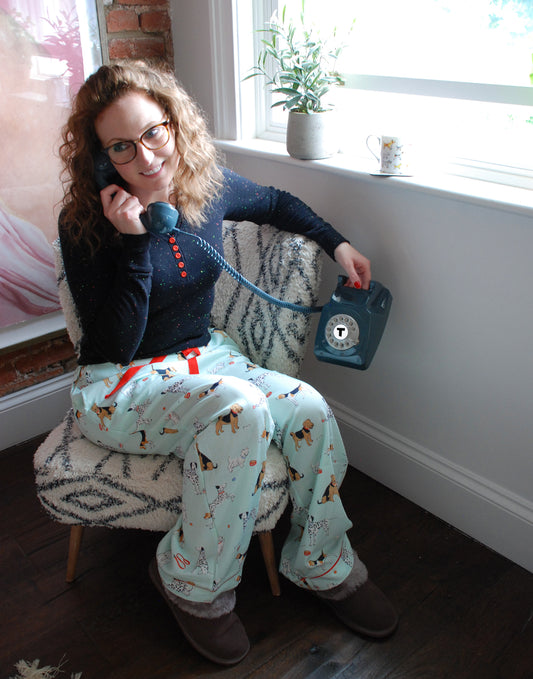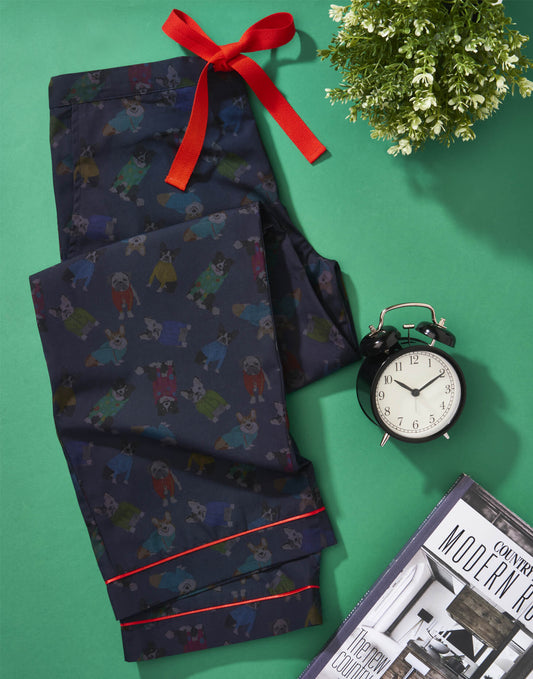
What is deadstock fabric?
Deadstock is another tern for left over fabric, overstock, surplus fabric, remnant fabric or end of roll fabric. The crux of it is, it's left over from it's original purpose.
Why does deadstock fabric exist?
End of roll fabric may arise due to a brand ordering too much, a fabric mill producing it in incorrect colours; there could be damages or flaws or maybe a cancelled order. Whatever the case, this fabric is ready to be thrown away. However, there’s so many people and brands out there which prefer the colour error, like the fact the mill over produced or cut the pattern pieces out around the minor damage. Majority of the time, deadstock fabric is damage free and it’s more down to excess over fault.
How is deadstock fabric sustainable?
Fabric and product waste in the fashion industry is at an all-time high with 92 million tons of textile waste going to landfill every year. With fast fashion brands still being prevalent, this increases year on year.
The clothing and textiles industry make up at least 7% of the amount of waste put into landfill, globally.
Lots of small businesses and larger brands purchase deadstock fabric for the reason that it’s cheaper to buy than creating your own and can sometimes be ex-designer stock too. When chosen thoughtfully, this ‘waste’ fabric can be given a whole new life and also can create zero waste. If brands and small independent designers opt for natural fibres and fabrics, this is very eco-friendly for the planet. You are saving this fabric from going to waste, you are getting it at a fraction of the price and you are also giving it a new life in your designs.
This is why we chose to use Liberty London deadstock fabric for our Dotty Print and Rascal Dog Print Trousers; it’s 100% cotton and of good, world-renowned quality. When Liberty London print their fabric, they ensure their fabric has GOTS certification (Global Organic Textile Standard) along with having a Oeko-Tex Standard 100 rating (meaning it’s been tested to ensure it’s not harmful to human health).

Can using deadstock fabric be greenwashing?
60% of new clothing materials have plastic in them. Usually polyester, acrylic, nylon or polyamide. With this in mind, even the deadstock fabric that is made from these plastic fabrics, are not sustainable.* This is when the word greenwashing may be used for this context. Yes, it’s great that the plastic deadstock fabric will get a new life before it goes to landfill but it will never decompose naturally.
Natural fabrics like cotton, Tencel, linen or wool are biodegradable and compostable. The material will naturally break down into the environment without any negative effects when it does eventually get thrown away. On a side note, you would also want the fabric/garment to not have any toxic dyes to finishes as that will end up in the soil.
As you can tell, there are a lot of factors in calling deadstock sustainable and knowing what you are using is actually sustainable and kind to mother nature.
*On a side note, plastic fabrics are not something anyone should want to wear or have on their skin. To make the non-natural fabrics like polyester, you have to use petroleum. Would wash your hands if you got petroleum on them when filling up your car? If so, then why would you wear a garment that is 100% polyester? It’s just in a different format and your skin is your largest organ in the body.
Take a look at Tessie's two pyjama trousers that are made from deadstock Liberty London Fabric below. We chose this fabric as it complements the Tessie brand and was a perfect way to introduce some more prints to the Tessie range.
Dotty Print Pyjama Trousers Made with Liberty Fabric from Deadstock
Rascal Dog Print Pyjama Trousers Made with Liberty Fabric from Deadstock








